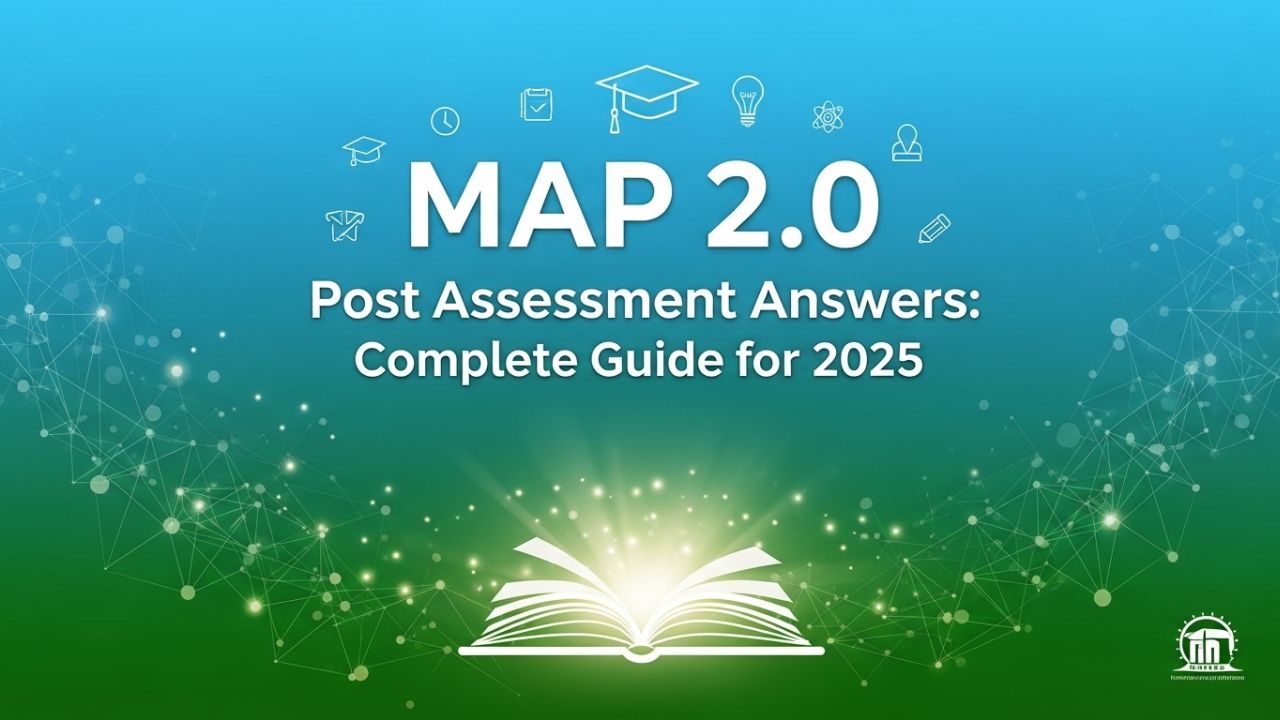Introduction to MAP 2.0
As the educational landscape continues to evolve, assessments play a crucial role in gauging student progress. The MAP 2.0 Post Assessment is no exception, offering valuable insights into learners’ achievements and areas for improvement. Whether you’re a teacher looking to enhance your curriculum or a student striving for academic success, understanding this assessment is vital. So what exactly can you expect from the MAP 2.0 Post Assessment? Let’s dive deeper into its significance and explore how it has transformed for 2025!
Importance of Post Assessment
Post assessments play a critical role in the learning process. They help gauge understanding and retention of material covered during the MAP 2.0 assessment period. By evaluating student performance, educators can identify strengths and weaknesses. This information is essential for tailoring future instruction to meet individual needs.
Additionally, post assessments encourage students to reflect on their learning journey. It fosters self-awareness about areas requiring improvement and reinforces concepts that have been mastered. Moreover, these evaluations provide valuable feedback to schools and districts. Data collected can inform curriculum adjustments and resource allocation for better educational outcomes.
The importance of post assessments lies in their ability to drive continuous improvement in both teaching strategies and student success rates.
Changes and Updates in MAP 2.0
MAP 2.0 has introduced several significant changes aimed at enhancing the assessment experience for both students and educators. One of the most notable updates is the integration of a more adaptive testing model. This allows questions to adjust in difficulty based on student performance, providing a tailored experience.
Additionally, there’s an increased emphasis on incorporating real-world applications into assessments. The new format encourages critical thinking and problem-solving skills, making it more relevant to today’s educational landscape.
User interface improvements also stand out in this version. A streamlined dashboard makes navigation simpler, ensuring that users can easily access necessary resources and information without confusion.
Enhanced reporting features provide detailed insights into student progress. Educators can now track growth over time with greater accuracy, enabling targeted interventions where needed. These updates collectively aim to create a more effective learning environment for everyone involved.
Frequently Asked Questions about the Post Assessment
Many learners have questions about the MAP 2.0 post assessment. This is completely normal, as navigating new formats can be challenging. One common inquiry revolves around timing. Students often wonder how much time they should allocate for completion. It varies based on individual pace, but planning for a thorough review is advisable.
Another frequent question concerns the content of the assessment itself. Learners want to know if it reflects what was covered in lessons or introduces new material. Generally, it focuses on previously taught concepts while incorporating some application-based scenarios.
Students may ask about retakes and scoring criteria. Understanding these aspects helps alleviate anxiety and sets clear expectations for performance evaluation. These FAQs highlight the importance of clarity in preparing for assessments like MAP 2.0.
Tips for Successfully Completing the Post Assessment
Preparation is key. Review the materials provided during your MAP 2.0 training. Familiarize yourself with all relevant concepts. Practice makes perfect. Take advantage of any practice assessments available to you. They will help you gauge your understanding and identify areas that need improvement.
Time management is crucial. Allocate specific time blocks for each section of the post assessment to ensure you cover everything without rushing through any part. Stay calm and focused during the assessment. Stress can cloud your judgment, so take deep breaths if needed.
Collaborate with peers for insights or clarification on challenging topics. Engaging in discussions can deepen your comprehension and prepare you better. Trust in your knowledge and skills acquired throughout the course journey. Confidence plays a significant role in how effectively you perform under pressure.
How to Access the Answers for MAP 2.0 Post Assessment
Accessing the answers for the MAP 2.0 Post Assessment is straightforward if you know where to look. Start by visiting your official educational portal or learning management system. Once logged in, navigate to the assessment section. You should find a dedicated area for MAP assessments. This typically includes options for both taking and reviewing past assessments.
If you’re having trouble locating specific answers, check any provided resources or guidelines from your instructor or institution. They often offer detailed instructions on how to access these materials. Remember that collaboration with peers can also be beneficial. Discussing questions and topics with classmates may help clarify concepts as well as point towards correct answers shared among students.
Don’t overlook forums and online groups focused on education-related discussions; they can provide insights into accessing valuable information related to MAP 2.0 post assessments.
Conclusion
Navigating the MAP 2.0 Post Assessment can feel overwhelming, but with the right tools and information, you can approach it with confidence. Understanding what MAP 2.0 is and why post assessments matter sets a solid foundation for success. Awareness of recent changes ensures you’re prepared for what to expect.
As you engage with frequently asked questions, you’ll find clarity on common concerns that may arise during the process. Implementing effective tips will not only enhance your ability to complete the assessment successfully but also improve your learning experience overall.
Accessing answers to the MAP 2.0 Post Assessment becomes easier when you know where to look and how best to utilize available resources. This journey demands diligence, but being informed makes all the difference in achieving optimal results. on this path requires preparation and an eagerness to learn which ultimately leads you towards mastering each component of your educational journey through MAP 2.0

